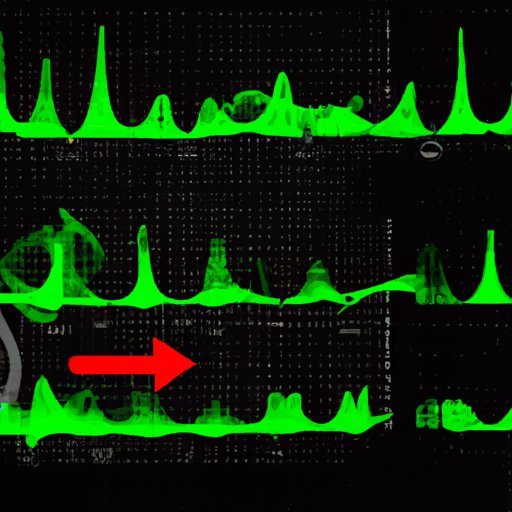Introduction
Sonar stands for SOund Navigation And Ranging, and is used to detect objects underwater. It works by emitting sound waves that bounce off objects and return back to the source, allowing the user to calculate the distance between them. Sonar is used in a variety of applications, such as underwater navigation, object detection, and data collection.
Step-by-Step Guide to Understanding How Sonar Works
The science behind sonar technology is based on the principles of acoustics. Sound waves travel through the water and reflect off objects, then return back to the source. This reflection of sound is known as an echo. By measuring the time it takes for the echo to return, it is possible to calculate the distance between the source and the object.
Sonar works by using a transducer to send out sound waves, which then travel through the water and reflect off objects. The transducer then picks up the returning echo and sends it back to the source. This process is repeated multiple times to create a picture of the area being scanned. This picture is then analyzed to determine the size, shape, and location of any objects present.
The components of sonar include a transceiver, which transmits and receives sound waves, and a processor, which interprets the data from the transceiver. Additionally, sonar can be equipped with additional sensors, such as cameras or light sources, to provide more detailed information about the environment.

An Overview of Sonar: How It Works and Its Uses
Sonar has many practical applications, such as underwater navigation, object detection, and data collection. It is used to map the seafloor, locate objects, and track the movement of animals. Sonar is also used to detect changes in water temperature, salinity, and pressure, as well as to identify potential hazards.
Sonar has several advantages over other forms of detection, such as radar. It has a much longer range than radar, is able to penetrate deeper into the ocean than radar, and can detect objects at greater depths. Additionally, sonar is not affected by weather conditions, making it a reliable tool for navigation and data collection.
Sonar is used in a variety of industries, including military, commercial, and scientific applications. The military uses sonar for reconnaissance and surveillance, while commercial users rely on it for underwater exploration and mapping. Scientists use sonar to study oceanography, marine biology, and geology.
The Basics of Sonar – How It Works and Its Uses
The mechanics of sonar are relatively simple. A transducer emits sound waves, which travel through the water and reflect off objects. The transducer then picks up the returning echo and sends it back to the source. This data is then processed to create a picture of the area being scanned.
There are several different types of sonar, each with its own specific uses. Side-scan sonar is used to create detailed images of the seafloor, while bathymetric sonar is used to measure the depth of the ocean. Multi-beam sonar is used to map large areas of the ocean floor, while single-beam sonar is used for smaller areas.

A Primer on Sonar Technology: Understanding How It Works
Sonar technology is based on the principles of acoustics and physics. Sound waves travel through the water and reflect off objects, creating an echo that is picked up by the transducer and sent back to the source. By measuring the time it takes for the echo to return, it is possible to calculate the distance between the source and the object. This data is then processed to create a picture of the area being scanned.
The data collected by sonar can be used to detect objects and features of the seafloor, such as rocks, coral reefs, shipwrecks, and other underwater structures. It can also be used to measure water temperature, salinity, and pressure, as well as to identify potential hazards. Additionally, sonar can be used to track the movement of animals and to locate objects in the water.
Conclusion
In conclusion, sonar is a powerful tool that is used in a variety of applications, such as underwater navigation, object detection, and data collection. It works by emitting sound waves that bounce off objects and return back to the source, allowing the user to calculate the distance between them. Sonar has several advantages over other forms of detection, such as radar, and is used in a variety of industries, including military, commercial, and scientific applications. The technology behind sonar and the data collected by it provide invaluable insights into the underwater world.
By understanding the science behind sonar technology and its uses, it is possible to gain a better appreciation of the technology and its importance in our daily lives. Sonar has revolutionized the way we explore and interact with the underwater world, and its applications will continue to evolve as technology advances.
(Note: Is this article not meeting your expectations? Do you have knowledge or insights to share? Unlock new opportunities and expand your reach by joining our authors team. Click Registration to join us and share your expertise with our readers.)
